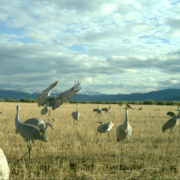Greater Yellowstone Crane Festival Coming to Driggs, Idaho
Teton Regional Land Trust is presenting the Greater Yellowstone Crane Festival on Saturday, September 15th from Noon to 5pm at the Driggs City Center Plaza. The afternoon will include nature-themed arts and crafts for kids, live music, traditional and non-traditional crane dances, poetry readings, and food and drinks from local vendors. The festival is being held to celebrate the migration of Sandhill Cranes through Teton Valley.
The festival also includes some special workshops. A photography workshop taught by Mary Lou Oslund and Linda Swope for those 16 and older will be held on Tuesday, September 11 from 5-8pm; Dancer’s Workshop, from Jackson, will host a will host a 2-hour session on Saturday, September 15 from 1-3pm for ages 12 and under; Jackson poet Matt Daly will teach a 90-minute poetry workshop to write original poems focused on cranes. This workshop will be held on Saturday, September 15 from 11:30am-1pm for ages 14 and over and readings will be shared during the festival performances that afternoon. Participants should sign up for the workshops ahead of time at: https://tetonlandtrust.org/event/greater-yellowstone-crane-festival/
Live music by will be from Noon to 3pm. At 3:30pm, there will be a presentation on the plaza stage that will feature remarks from Driggs Mayor, Hyrum Johnson and George Archibald, co-founder of the International Crane Foundation and world-renowned expert on cranes. Followed by poetry readings and dance performances by Idaho Falls School of Ballet, Teton Valley Hispanic Resource Center, local Girl Scouts, and Dancer’s Workshop.
After the afternoon on the Plaza, sign up for a special presentation in the Driggs Senior Center from George Archibald. Learn about crane conservation across the world and the Land Trust’s efforts to conserve the staging habitat for the largest staging population of Sandhill Cranes in the Greater Yellowstone. The talk will be followed by a field tour to observe cranes as they fly between the grain fields and their night roosts along the Teton River. Limited space is available for the field tour and you can reserve your spot at: https://tetonlandtrust.org/event/greater-yellowstone-crane-festival/
In addition to celebrating the Sandhill Crane migration and the exceptional natural and agricultural resources of the Teton Valley, the Land Trust is raising awareness about efforts to conserve critical habitat for cranes and other iconic species of the Greater Yellowstone. Because of the unique alignment of proximate wetland roost habitat and grain fields for forage, Teton Valley hosts the largest population of pre-migration staging Sandhills in the entire Greater Yellowstone. Historically over 5,000 Sandhill Cranes spent the fall in Teton Valley, fueling up before migrating to the south for the winter. Due to habitat degradation and development, numbers fell to as few as 500 birds in the 1980s.
Alarmed by this dramatic decline, the Land Trust began working to protect the wetland roosts and agricultural lands the birds rely on during this critical time. In recent years, we recognized that even more needed to be to sustain this iconic species in our region. Since 2015 we have worked to provide food plots adjacent to wetland roosts. This program has been extremely effective and has helped us stabilize and grow the regional population of migrating Sandhills. A study of banded Sandhills in both Grand Teton and Yellowstone National Parks found that every Sandhill banded relied on the Teton Valley to fuel up for their fall migration, demonstrating the importance of this project.
In 2017, we were happy to report that we recorded 1,489 Sandhills in a single day and estimate that over 2,000 came to the Teton Valley to build up the energy reserves needed for their fall migration. This is incredible progress and a sign that the food plot program is helping the population recover. We believe if we are able to provide stable food resources, we can sustain Teton Valley as the most critical staging area for Sandhills in the entire Greater Yellowstone.



